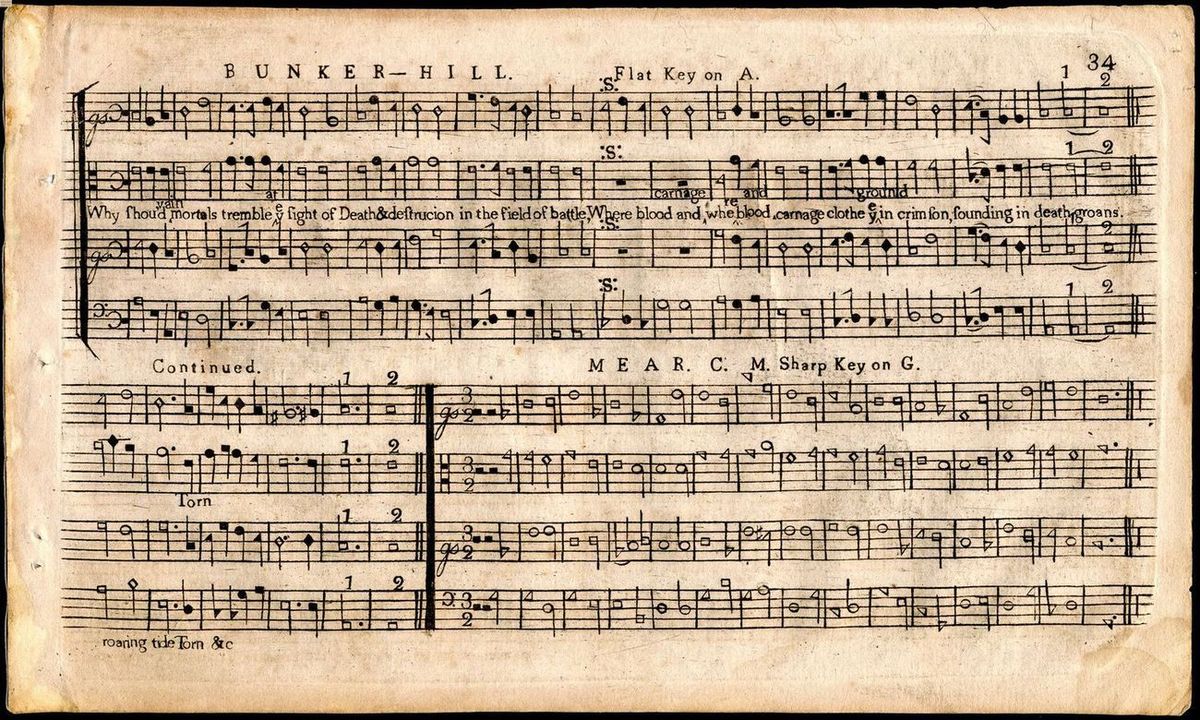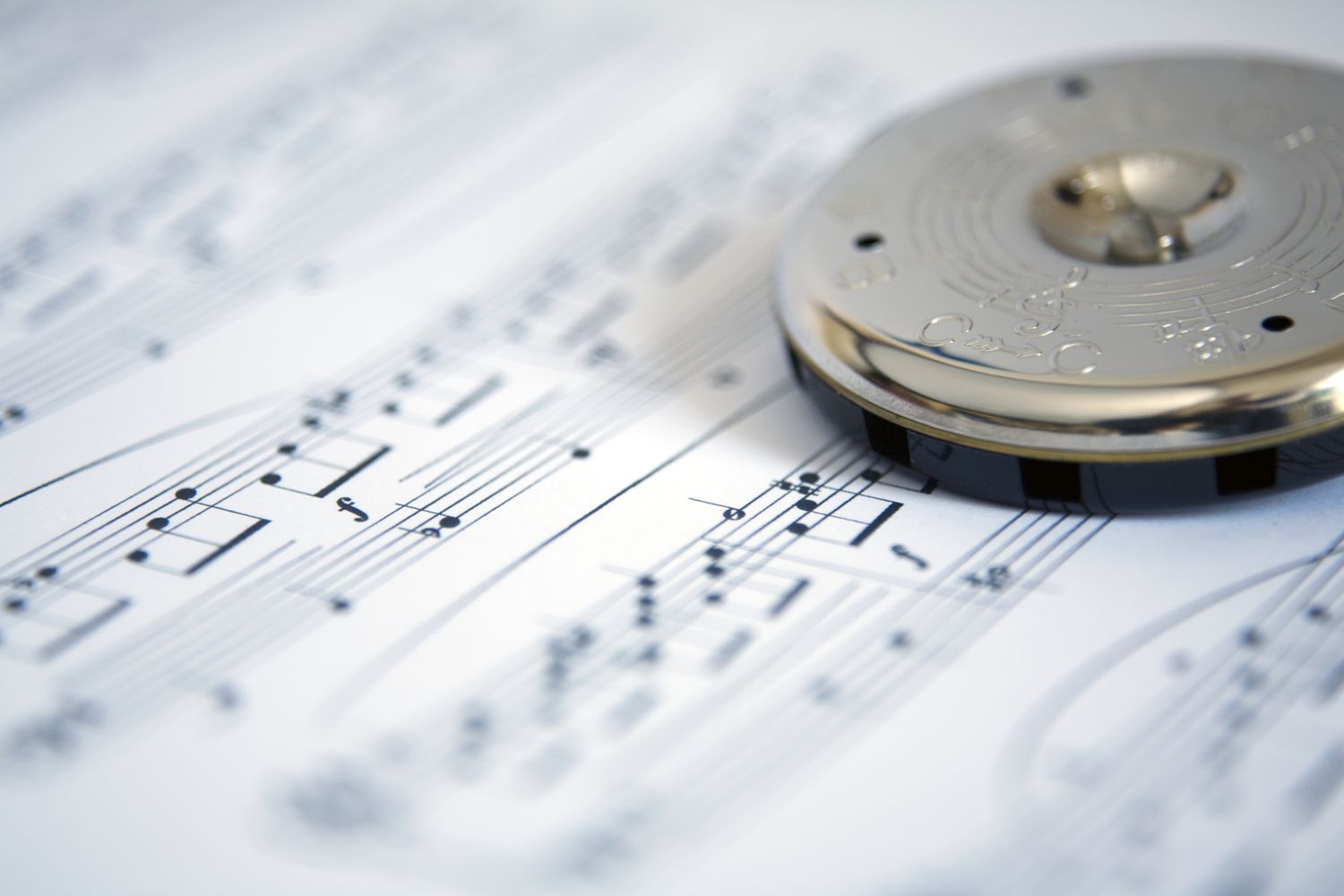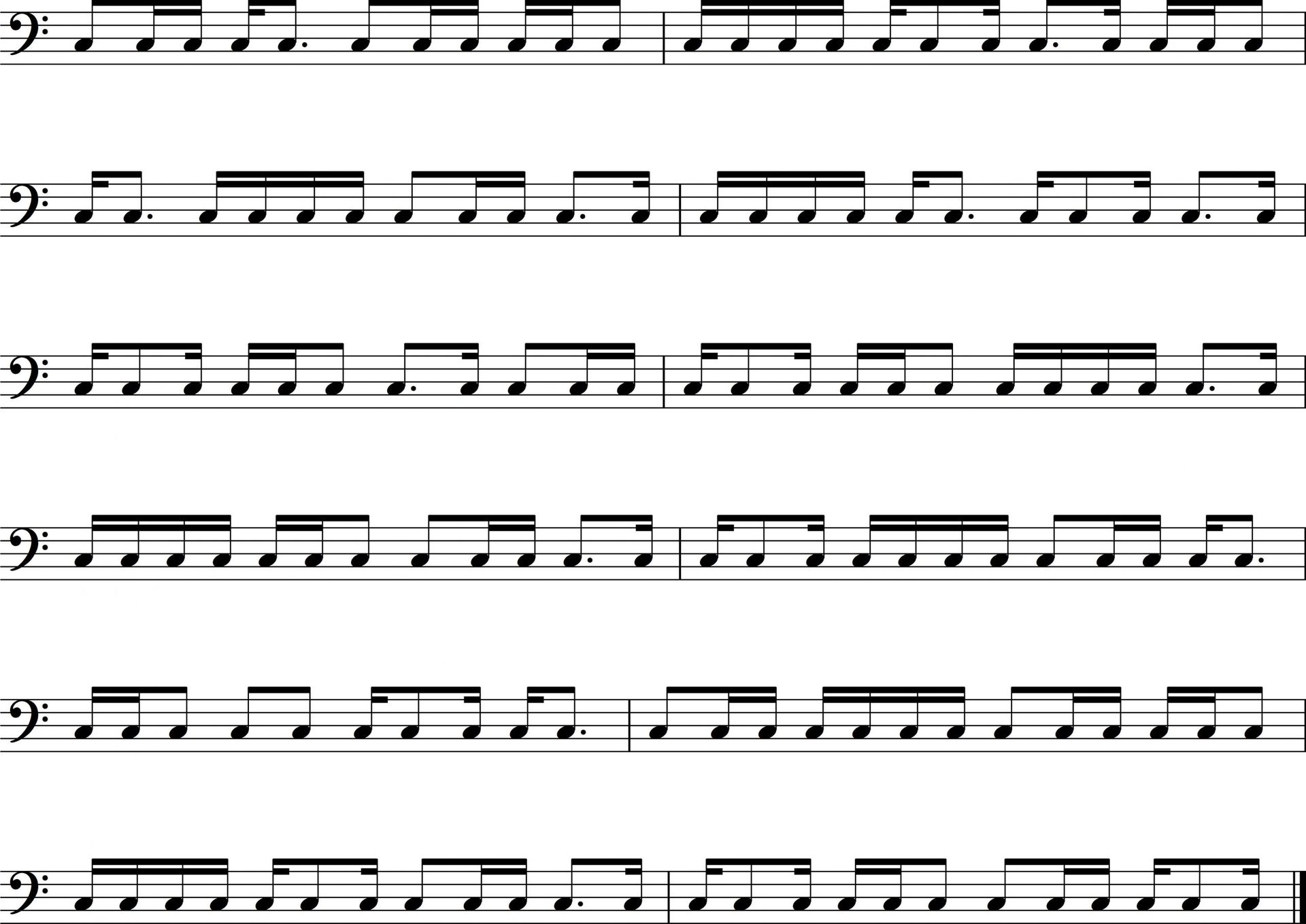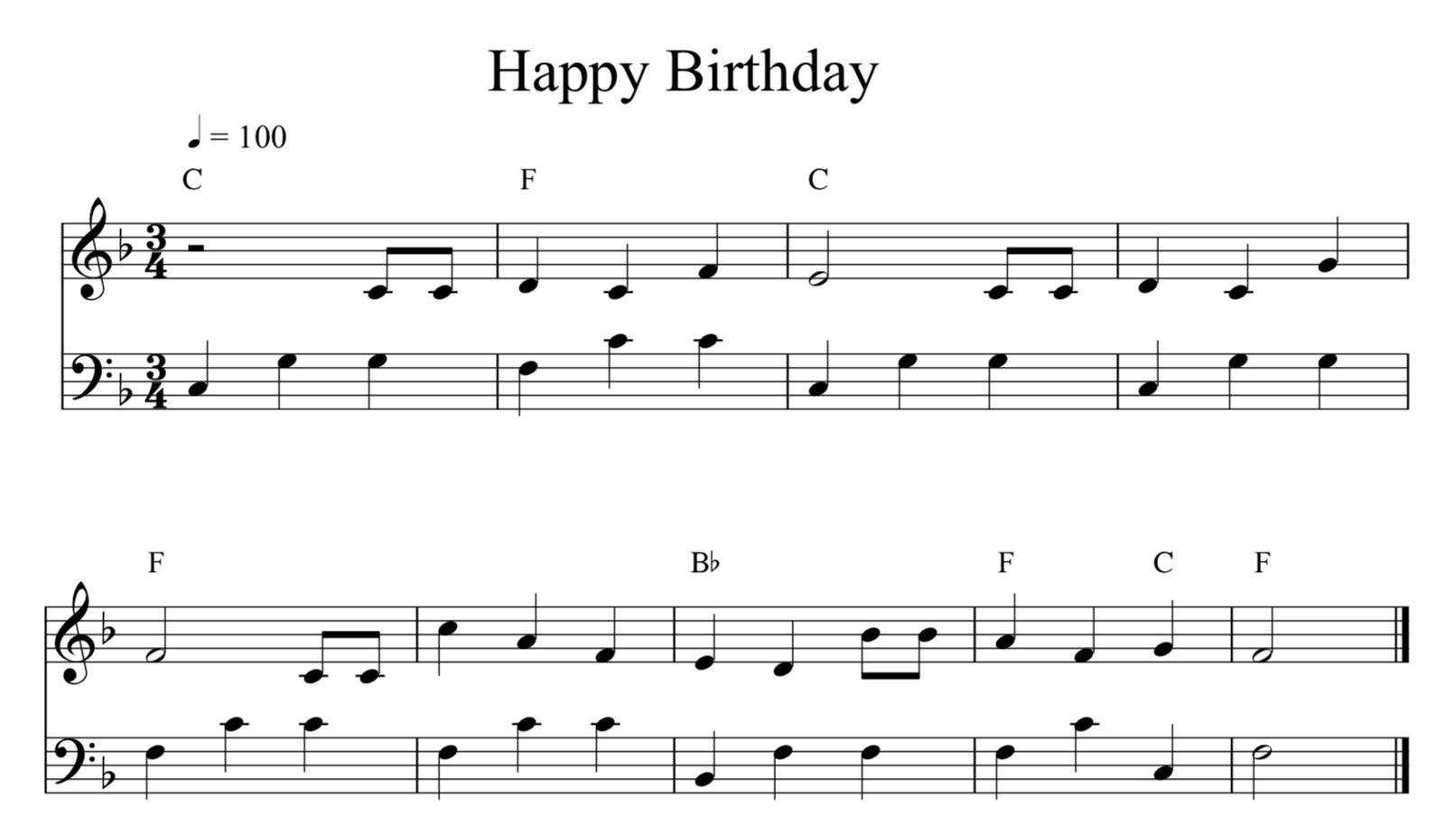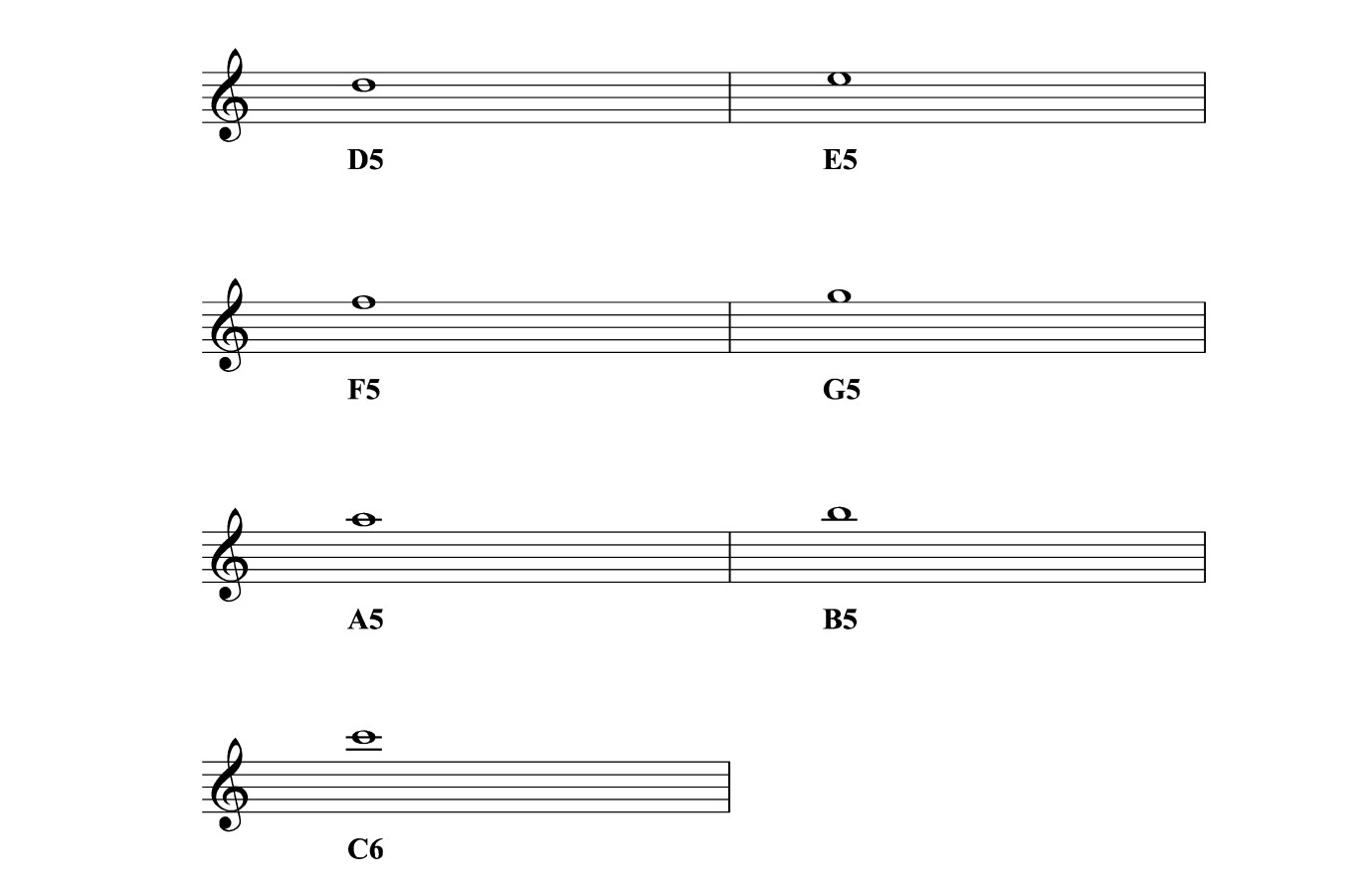Home>Events & Info>Note>What Is The Lowest Music Note


Note
What Is The Lowest Music Note
Modified: January 22, 2024
Learn about the lowest music note, its significance, and how it influences compositions. Explore the intricate world of notes and their role in creating beautiful melodies.
(Many of the links in this article redirect to a specific reviewed product. Your purchase of these products through affiliate links helps to generate commission for AudioLover.com, at no extra cost. Learn more)
Table of Contents
- Introduction
- Explaining Music Notes
- Understanding Pitch and Frequency
- Defining the Lowest Music Note
- The Range of Human Hearing
- The Fundamental Frequency of Musical Instruments
- The Lowest Music Note in Popular Instruments
- The Influence of Technological Advancements
- The Role of Sub-bass Frequencies
- Conclusion
Introduction
Music is a universal language that has the power to evoke emotions, inspire creativity, and bring people together. At the heart of music lies a system of symbols and notations known as musical notes. These notes represent the fundamental building blocks of music, allowing musicians to communicate their melodies, harmonies, and rhythms.
In the world of music, notes are categorized based on their pitch or frequency. Pitch refers to the perceived highness or lowness of a sound, while frequency measures the number of sound waves produced per second. The lower the frequency, the deeper and more resonant the sound. Each musical instrument has a unique range of notes it can produce, including a lowest and highest note.
In this article, we will explore the concept of the lowest music note and delve into the factors that influence its definition. We will also examine the role of technological advancements in expanding the range of music notes and discuss the significance of sub-bass frequencies in modern music.
Explaining Music Notes
Music notes are symbols used to represent specific pitches in written or printed music. They indicate the duration, intensity, and pitch of a musical sound. Each note is written on a staff, consisting of horizontal lines and spaces, with the position of the note on the staff indicating its pitch.
There are seven main types of music notes: A, B, C, D, E, F, and G. These notes can be modified by various symbols such as sharps (#), flats (♭), and naturals (♮), which adjust the pitch of the note higher or lower. The arrangement of notes and symbols on the staff creates melodies, chords, and harmonies in a musical composition.
The duration of a note is represented by the shape of its symbol. A whole note indicates a long duration, while half notes, quarter notes, and eighth notes represent progressively shorter durations. These symbols, combined with rests, which signify periods of silence, give musicians a precise roadmap for playing music with proper timing and rhythm.
Music notes are not limited to a specific instrument or voice. They represent a universal language that can be interpreted by musicians of all instruments in an ensemble or orchestra. Through the reading and interpretation of these notes, musicians are able to recreate the composer’s intention and convey the emotions and feelings embedded within the music.
Understanding Pitch and Frequency
In music, pitch refers to the perceived highness or lowness of a sound. It is determined by the frequency of the sound waves produced. Frequency, on the other hand, measures the number of vibrations or cycles per second.
The unit of measurement for frequency is Hertz (Hz), named after the physicist Heinrich Hertz. The higher the frequency, the higher the perceived pitch, and vice versa. For example, a note with a frequency of 440 Hz is commonly recognized as the musical pitch A above middle C.
Our auditory system is capable of perceiving a wide range of frequencies, typically between 20 Hz and 20,000 Hz. This range is known as the audible spectrum. However, individual hearing abilities may vary, and factors such as age, exposure to loud noises, and genetic factors can affect our ability to hear certain frequencies.
In addition to the audible spectrum, there are also infrasound frequencies below the range of human hearing and ultrasound frequencies above the range. These types of frequencies are often used in scientific and medical applications but are not typically utilized in musical compositions.
Understanding the relationship between pitch and frequency is crucial for musicians and composers. By manipulating the frequency of the sound waves produced by different instruments or voices, they can achieve the desired pitches and create the melodies and harmonies that make up a musical composition.
Defining the Lowest Music Note
The lowest music note can vary depending on the musical instrument or the context in which it is being discussed. Different instruments have different ranges, and the lowest note possible will depend on the capabilities of the instrument and the skill of the player.
For example, in a piano, the lowest note is typically an A0, which has a frequency of 27.5 Hz. On a guitar, the open low E string is often considered the lowest note, with a frequency of 82.4 Hz. The double bass, which is the largest instrument in the string family, can play even lower notes with frequencies around 41 Hz.
In vocal music, the lowest note also depends on the vocal range and ability of the singer. Bass singers, for example, can reach extremely low notes that are not possible for other voice types. In classical opera, the lowest note written for a male singer is typically a C2 or a B♭1.
It’s important to note that the range of a musical instrument is not solely determined by the lowest note it can play. The instrument’s range also includes the highest note it can produce. The range of an instrument is crucial for composers and performers to consider when creating or playing music, as it affects the overall tonality and expression of the piece.
Furthermore, the lowest music note in a composition is often determined by the artistic intention of the composer. They may choose to incorporate low notes to create a sense of depth and power, or they may opt for higher notes to evoke a lighter and more ethereal atmosphere. The choice of the lowest note is a creative decision that contributes to the overall character and emotion of the music.
The Range of Human Hearing
The human auditory system is capable of perceiving a wide range of frequencies, known as the audible spectrum. However, individual hearing abilities can vary, and factors such as age, exposure to loud noises, and genetic factors can affect our ability to hear certain frequencies.
The audible spectrum for most individuals ranges from approximately 20 Hz to 20,000 Hz. This range encompasses the fundamental frequencies of most musical instruments and covers the vast majority of sounds encountered in daily life.
At the lower end of the audible spectrum, frequencies below 20 Hz are known as infrasound. These frequencies are often felt more than heard and are associated with sensations of deep rumbling or vibrations. Infrasound can be produced by natural phenomena such as earthquakes or by man-made sources like large machinery or subwoofers in audio systems.
On the other end of the spectrum, above 20,000 Hz, we enter the realm of ultrasound. Ultrasound frequencies are commonly used in medical imaging, industrial applications, and even by some animals for communication. These frequencies are beyond the range of human hearing, and we are unable to perceive them without the aid of specialized equipment.
It’s important to note that the sensitivity to different frequencies within the audible range can vary. For example, human hearing is most sensitive in the mid-frequency range (around 1,000 to 4,000 Hz) and less sensitive to very low or very high frequencies. This sensitivity profile is reflected in the design of audio systems and equalizers, which often boost or attenuate certain frequency ranges to optimize the listening experience.
Understanding the range of human hearing is valuable for musicians, audio engineers, and composers. By considering the limitations and capabilities of human hearing, they can make informed decisions when composing music, balancing frequencies in a mix, and creating an immersive auditory experience.
The Fundamental Frequency of Musical Instruments
Each musical instrument has a characteristic range of frequencies that it can produce, including a fundamental frequency that determines its pitch. The fundamental frequency is the lowest frequency produced by an instrument and forms the basis for the notes it can play.
String instruments, such as the guitar, violin, and cello, produce sound through the vibration of strings. The length, tension, and thickness of the string determine its fundamental frequency. By changing the length of the vibrating portion of the string or altering its tension through tuning, musicians can produce different pitches.
Wind instruments, like the flute, trumpet, and saxophone, generate sound through the vibration of air columns. The length of the air column and the size and shape of the instrument affect the fundamental frequency. By changing fingerings, embouchure, or valve positions, musicians can produce different pitches.
Percussion instruments, such as drums and xylophones, do not have a specific fundamental frequency like other instruments. The pitch is primarily determined by the size, shape, and material of the instrument, as well as the way it is struck or played.
Orchestral instruments, including brass, woodwinds, and strings, are designed to complement each other in terms of pitch and range. The instruments are divided into different sections, each with a specific range of notes and harmonies. This orchestration allows composers to create rich and balanced musical compositions.
The fundamental frequency of an instrument can be influenced and modified by factors such as playing techniques, accessories, and even the skill level of the musician. By understanding the fundamental frequency of their chosen instruments, musicians can explore the full range of possibilities and create melodies and harmonies that resonate with the desired emotional intent.
The Lowest Music Note in Popular Instruments
Each musical instrument has its own unique range of notes, including a lowest note that defines its lower limit of pitch. Let’s explore the lowest music note in some popular instruments:
- Piano: The lowest note on a standard piano is typically the A0, which has a frequency of 27.5 Hz. However, some modern pianos may have additional lower keys, extending the range even further.
- Guitar: The open low E string on a guitar is often considered the lowest note, with a frequency of 82.4 Hz. However, guitarists can tune their instruments even lower if desired.
- Violin: The lowest open string on a violin is the G string, which has a frequency of approximately 196 Hz. Violinists can also play notes below this by using techniques like fingerboard extensions or double stops.
- Flute: The lowest note on a standard C flute is the C4, which has a frequency of around 261.6 Hz. Flutists can play notes below this using techniques like half-holing or by utilizing extended techniques.
- Trumpet: The lowest playable note on a trumpet is typically the written F#3, which corresponds to a frequency of approximately 184.9 Hz. Trumpet players can produce lower pitches using various embouchure and valve techniques.
- Double Bass: As the largest instrument in the string family, the double bass can produce the lowest notes. The open lowest string is usually tuned to an E1, which has a frequency of about 41.2 Hz.
Please note that these are just examples and the available range for each instrument can vary depending on factors such as the instrument’s design, the player’s skill, and the specific musical context.
Understanding the lowest music notes in popular instruments is essential for composers, arrangers, and performers. It allows them to compose within the instrument’s range and create harmonies and melodies that take full advantage of the instrument’s capabilities.
The Influence of Technological Advancements
Technological advancements have had a profound impact on the world of music, including the range of music notes that can be produced. From the invention of new instruments to innovative recording and amplification techniques, technology has expanded the possibilities for musicians and composers.
One of the key advancements is the development of electronic instruments. Unlike traditional acoustic instruments, electronic instruments are not bound by the limitations of physical mechanics. They can produce an extensive range of sounds, including incredibly low and high frequencies that might be impossible for acoustic instruments to replicate.
Synthesizers, for example, can generate a wide variety of tones and pitches using electronic circuits instead of physical strings or air columns. These instruments often include sub-oscillators that allow musicians to produce sub-bass frequencies that extend well below the range of traditional instruments.
Another technological advancement is the use of amplification systems. Electric guitars, for instance, can now be paired with powerful amplifiers that enhance the instrument’s low-frequency response. This allows guitarists to create deep and resonant tones that were not possible with traditional acoustic guitars.
In addition, recording and production technology has revolutionized the way music is created and consumed. With sophisticated studio equipment and digital audio workstations, musicians can manipulate and enhance the range of music notes in post-production. They can experiment with pitch shifting, time stretching, and other effects to create unique sounds and explore new musical possibilities.
Furthermore, advancements in sound reproduction systems have greatly improved the listening experience for audiences. High-quality speakers and headphones can accurately reproduce a wide range of frequencies, allowing listeners to fully appreciate the depth and nuances of low notes in music.
Overall, technological advancements have not only expanded the range of music notes that can be produced but also democratized access to music creation. Musicians of all skill levels can now explore a vast array of sounds and experiment with different pitches and frequencies, fostering creativity and pushing the boundaries of musical expression.
The Role of Sub-bass Frequencies
In the realm of music, sub-bass frequencies play a crucial role in shaping the overall sound and creating a deep, immersive listening experience. Sub-bass refers to the very low frequencies that range between approximately 20 Hz and 60 Hz, which are felt more than heard.
Sub-bass frequencies have the ability to elicit physical sensations, resonating through our bodies and creating a powerful impact. In genres such as electronic music, hip-hop, and EDM, sub-bass is often emphasized to provide a visceral and energetic foundation.
These deep frequencies are typically produced by instruments specifically designed to handle low-frequency reproduction, such as subwoofers. Subwoofers are incorporated into sound systems to reproduce the sub-bass frequencies with clarity and intensity, allowing listeners to physically feel the music.
In addition to enhancing the music’s impact, sub-bass frequencies also contribute to the overall tonality and balance in a mix. They provide a sense of depth and richness, complementing the mid-range and high-frequency elements of a composition.
Furthermore, sub-bass frequencies can influence emotional responses and contribute to the mood of a piece. Low, rumbling sub-bass tones can evoke a sense of tension or foreboding, while smooth and deep sub-bass can create a feeling of warmth and relaxation.
It’s important to note that the effective reproduction of sub-bass frequencies depends on various factors, including the quality of the audio system and the acoustic properties of the listening environment. Proper speaker placement, room treatment, and equalization can greatly enhance the accuracy and impact of sub-bass reproduction.
However, it’s also essential to exercise caution when reproducing sub-bass frequencies, as excessive volume or improper calibration can lead to undesirable resonances and distortion. Achieving a balanced mix and ensuring the sub-bass frequencies are appropriately integrated with other musical elements is crucial for an enjoyable and well-rounded listening experience.
In summary, sub-bass frequencies add depth, impact, and emotion to music. They provide a foundation that can be felt in our bodies, enhancing the immersive power of music and contributing to its overall tonal balance. Skillful utilization of sub-bass frequencies can create a captivating sonic experience that resonates with listeners on a profound level.
Conclusion
Music notes are the fundamental building blocks of music, allowing musicians to express their creativity, communicate melodies and harmonies, and evoke emotions in listeners. Understanding the concept of the lowest music note is essential for composers, performers, and music enthusiasts.
Throughout this article, we have explored the diverse range of musical instruments and their lowest playable notes. From pianos to guitars, violins to trumpets, each instrument has its own unique range and capabilities. These lowest notes establish the foundation for the full range of pitches that can be produced.
We have also discussed the influence of technological advancements on the range of music notes. Electronic instruments, amplification systems, and recording technologies have expanded the possibilities for musicians, enabling them to explore sub-bass frequencies and create immersive musical experiences.
The role of sub-bass frequencies in music should not be underestimated. These deep tones add depth, impact, and emotional resonance to compositions. They can be felt physically and contribute to the overall tonal balance of a piece, enhancing its power and emotional impact.
As music continues to evolve, so does our understanding and exploration of music notes. The lowest music note is just one aspect of the vast world of music, but its significance cannot be overlooked. From orchestras to electronic productions, the quest for the perfect low frequency continues to inspire and captivate musicians and listeners alike.
In conclusion, whether we are delving into the lowest notes of a piano, exploring the sub-bass frequencies in a club, or appreciating the richness of a double bass, music notes, including the lowest ones, play a vital role in shaping the art and beauty of music.
By understanding and appreciating the lowest music notes, we can delve deeper into the intricacies of music, expanding our musical horizons and experiencing a deeper connection with the art form that transcends language and culture.


